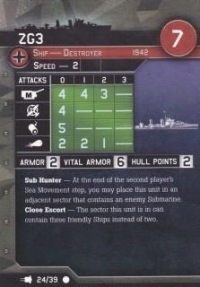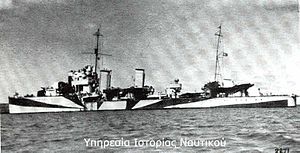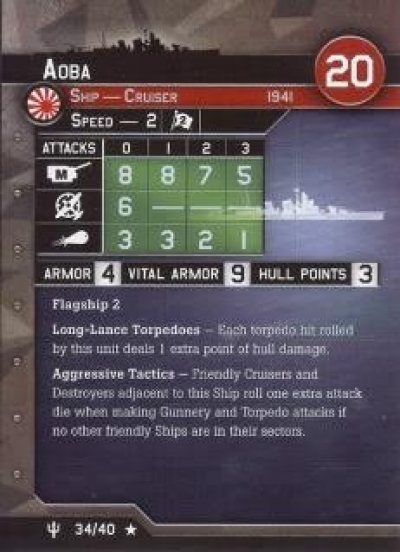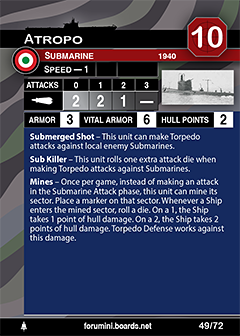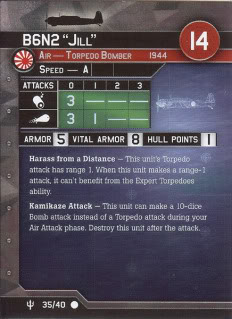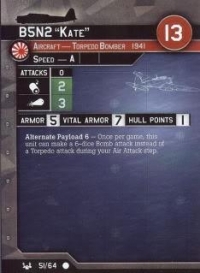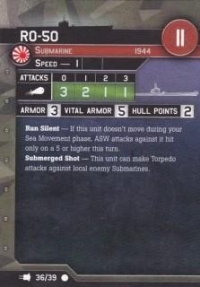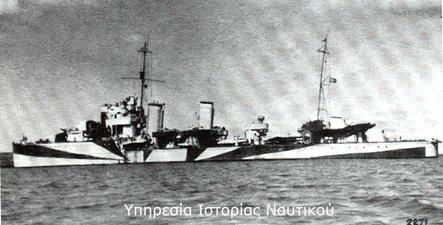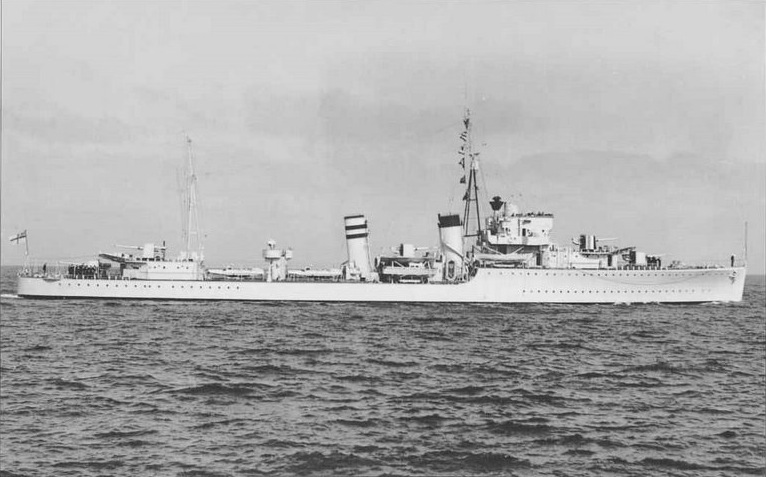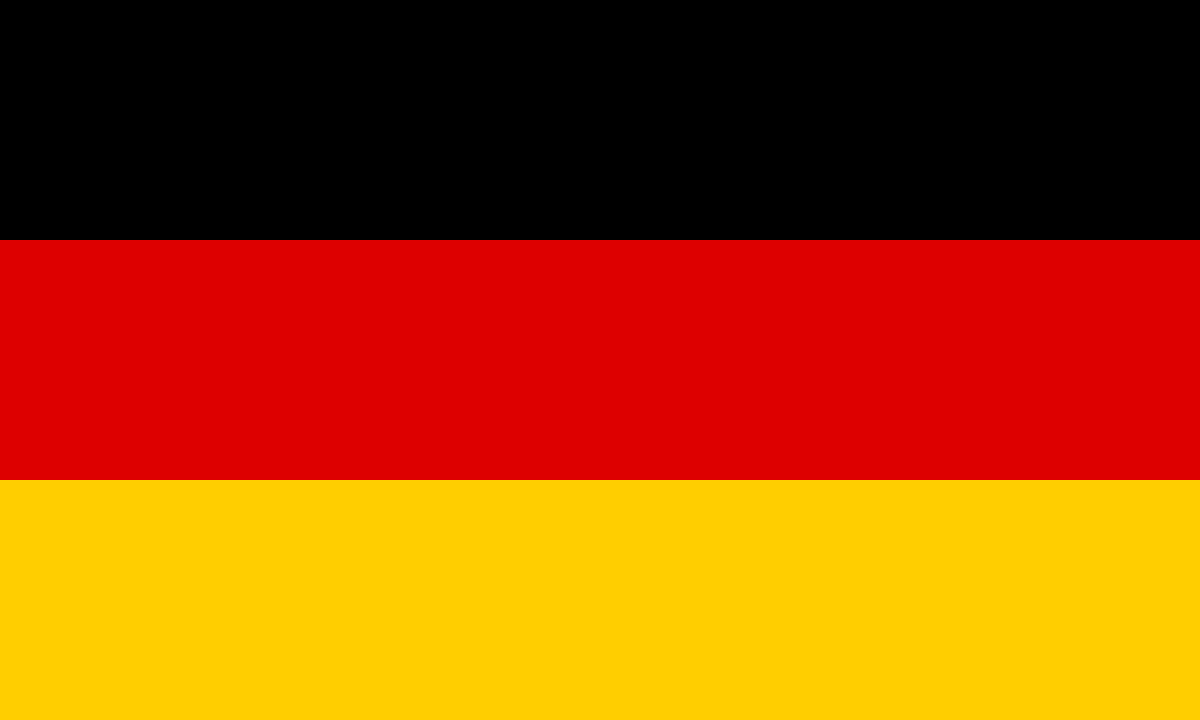Prototype: The Greek ship Vasilefs Georgios was sunk when Germany invaded Greece in 1941. The ship was later salvaged and repaired by the Germans who commissioned her into the Kriegsmarine (German Navy) in 1942 as ZG3, later renaming her as Hermes. They generally used the ship to escort convoys to and from North Africa and islands in the Aegean Sea. In addition, the Germans occasionally used the ship to lay mines and to ferry troops and supplies. After Hermes was transferred to the Central Mediterranean, she sank a British submarine about a week before she was crippled by Allied aircraft in late April 1943. The ship was towed to Tunisia and was scuttled as a blockship shortly before the Allies occupied Tunisia in early May. They refloated the wreck and it was scrapped after the war.
Class History: The G- and H-class destroyers were a group of 18 destroyers built for the Royal Navy during the 1930s. Six additional ships being built for the Brazilian Navy when World War II began in 1939 were purchased by the British and named the Havant class. The design was a major export success with other ships built for the Argentine and Royal Hellenic Navies. They were assigned to the Mediterranean Fleet upon completion and enforced the Non-Intervention Agreement during the Spanish Civil War of 1936–39.
Most ships were recalled home or were sent to the North Atlantic from October–November 1939, after it became clear that Fascist Italy was not going to intervene in World War II. Then they began to escort convoys and patrol for German submarines and commerce raiders. Two ships were lost to German mines in the first six months of the war. Three more were lost during the Norwegian Campaign, one in combat with a German cruiser and two during the First Battle of Narvik in April 1940. The Battle of France was the next test for the destroyers from May–June, with many of the Gs and Havants participating in the evacuation of Dunkirk and the subsequent evacuations of Allied troops from western France. Three ships were sunk, two by bombs and the other to torpedoes. Most of the H-class ships were sent to the Mediterranean in May in case Mussolini decided to attack France and the majority of the surviving Gs were sent to Force H at Gibraltar in July. Several of them participated in the Battle of Dakar, before being assigned to the Mediterranean Fleet with their sister ships. By the end of the year, the ships participated in several battles with the Royal Italian Navy, losing two to Italian mines and torpedoes, while sinking two Italian submarines. The Havants spent most of the war in the North Atlantic on convoy escort duties, losing half their number to German submarines, while helping to sink six in exchange by the end of the war.
Most ships were recalled home or were sent to the North Atlantic from October–November 1939, after it became clear that Fascist Italy was not going to intervene in World War II. Then they began to escort convoys and patrol for German submarines and commerce raiders. Two ships were lost to German mines in the first six months of the war. Three more were lost during the Norwegian Campaign, one in combat with a German cruiser and two during the First Battle of Narvik in April 1940. The Battle of France was the next test for the destroyers from May–June, with many of the Gs and Havants participating in the evacuation of Dunkirk and the subsequent evacuations of Allied troops from western France. Three ships were sunk, two by bombs and the other to torpedoes. Most of the H-class ships were sent to the Mediterranean in May in case Mussolini decided to attack France and the majority of the surviving Gs were sent to Force H at Gibraltar in July. Several of them participated in the Battle of Dakar, before being assigned to the Mediterranean Fleet with their sister ships. By the end of the year, the ships participated in several battles with the Royal Italian Navy, losing two to Italian mines and torpedoes, while sinking two Italian submarines. The Havants spent most of the war in the North Atlantic on convoy escort duties, losing half their number to German submarines, while helping to sink six in exchange by the end of the war.
Country: Germany is a Western European country with a landscape of forests, rivers, mountain ranges and North Sea beaches. It has over 2 millennia of history. Berlin, its capital, is home to art and nightlife scenes, the Brandenburg Gate and many sites relating to WWII. Munich is known for its Oktoberfest and beer halls, including the 16th-century Hofbräuhaus. Frankfurt, with its skyscrapers, houses the European Central Bank.
Item created by: Lethe on 2015-05-31 17:46:30. Last edited by gdm on 2019-10-13 18:01:51
If you see errors or missing data in this entry, please feel free to log in and edit it. Anyone with a Gmail account can log in instantly.
If you see errors or missing data in this entry, please feel free to log in and edit it. Anyone with a Gmail account can log in instantly.


